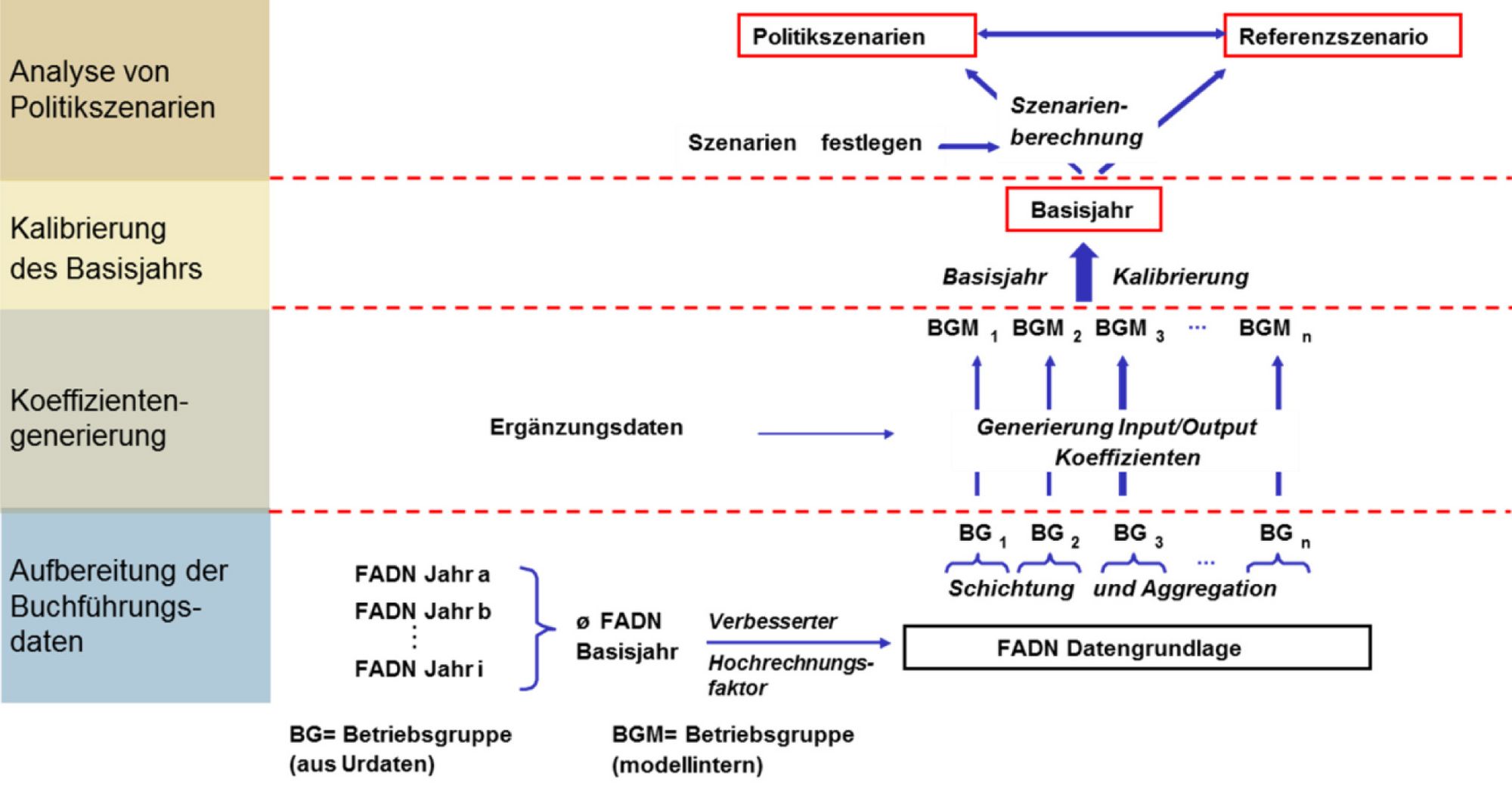FARMIS in brief
FARMIS is a comparative-static programming model for farm groups based on information from the farm accountancy data network (FADN). It provides a detailed reproduction and projection of agricultural production activities at farm level. Competition of farms on important factor markets is modelled endogenously.
Type
Mathematical programming model
Main field of application
Differentiated analysis of policy impacts on farms of different type, size, etc.
Opportunities
Sector-consistent modelling of policy impacts taking into account farm characteristics as well as ownership and prices of quotas and land for income assessments
Limits
Structural change currently projected exogenously; no single-farm projections; projection of new activities restricted
Typical applications
Analyses of CAP reforms (e.g. Ecoschemes, CAP after 2020)
Specifics
- Calibration by positive mathematical programming
- Aggregation of farm group results to sector level
- Coupling to partial equilibrium market models
Data base
Farm accountancy data network (FADN). The current base year is based on accountancy information from national FADN of the farming years 2018/19, 2019/20 and 2020/21. The stratification by agricultural region, main farm type, farm size and management system provides 601 farm group models (of which 100 farm groups represent organic farming).
Differentiation of production
27 crop und 22 livestock activities
Policy instruments
Ecoschemes, production quotas, direct payments, modulation, set-aside, stocking rate limits, minimum land use requirements
Trade
Quotas, land, young animals
Endogenous variables
Factor allocation, supply quantities and income at farm and sector level, prices of quotas, land, young animals
Exogenous variables
Product prices, policy variables (e.g. area payments, quotas), projection of technical coefficients
Software
GAMS
Literature
- 0
Rieger J, Freund F, Offermann F, Geibel I, Gocht A (2023) From fork to farm: Impacts of more sustainable diets in the EU-27 on the agricultural sector. J Agric Econ 74(3):764-784, DOI:10.1111/1477-9552.12530
- 1
Haß M, Deblitz C, Freund F, Kreins P, Laquai V, Offermann F, Pelikan J, Sturm V, Wegmann J, Witte T de, Wüstemann F, Zinnbauer M (2022) Thünen-Baseline 2022 - 2032: Agrarökonomische Projektionen für Deutschland. Braunschweig: Johann Heinrich von Thünen-Institut, 126 p, Thünen Rep 100, DOI:10.3220/REP1667811151000
- 2
Braun J (2020) Weiterentwicklung eines sektorkonsistenten Betriebsgruppenmodells um Treibhausgasemissionen und Bewertung von ausgewählten Minderungsstrategien. Aachen: Shaker, 190 p, Berlin, Humboldt-Univ, Diss, 2019, Berliner Schr Agrar Umweltökonomik 23
- 3
Ehrmann M (2017) Modellgestützte Analyse von Einkommens- und Umweltwirkungen auf Basis von Testbetriebsdaten. Braunschweig: Johann Heinrich von Thünen-Institut, 250 p, Thünen Rep 48, DOI:10.3220/REP1493970811000
- 4
Hecht J, Moakes S, Offermann F (2016) Redistribution of direct payments to permanent grassland: intended and unintended impact. EuroChoices 15(3):25-32, DOI:10.1111/1746-692X.12099
- 5
Deppermann A, Grethe H, Offermann F (2014) Distributional effects of CAP liberalisation on western German farm incomes: an ex-ante analysis. Eur Rev Agric Econ 41(4):605-626, DOI:10.1093/erae/jbt034
- 6
Offermann F, Margarian A (2014) Modelling structural change in Ex-Ante-Policy Impact Analysis. In: Zopounidis C, Kalogeras N, Mattas K, Dijk G, Baourakis G (eds) Agricultural cooperative management and policy : new robust, reliable and coherent tools. Cham: Springer International Publ, pp 151-162, DOI:10.1007/978-3-319-06635-6_8







